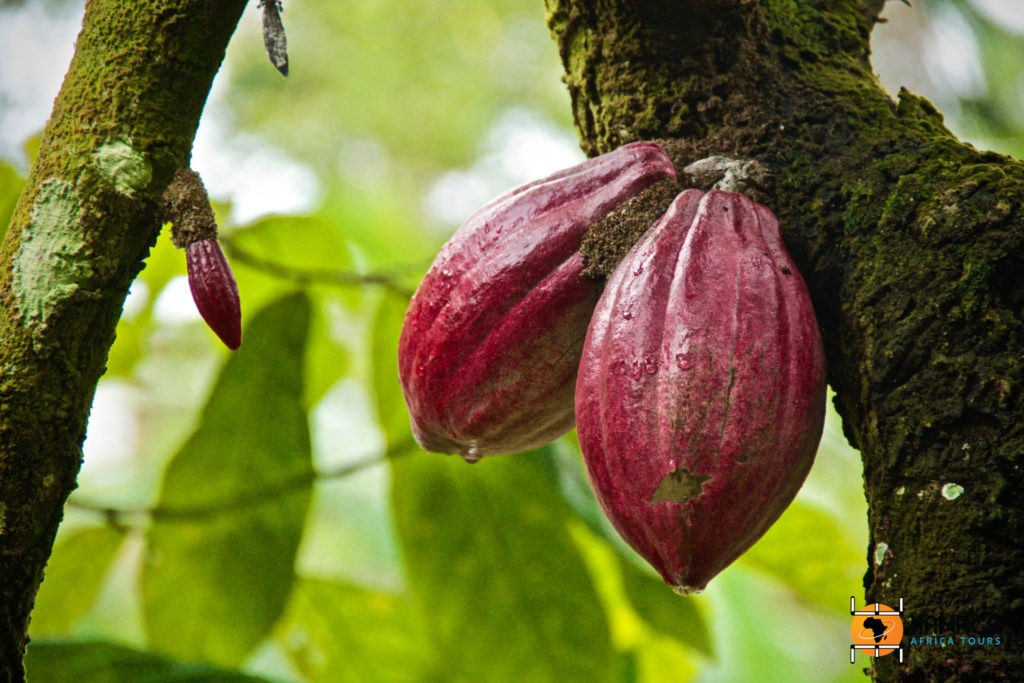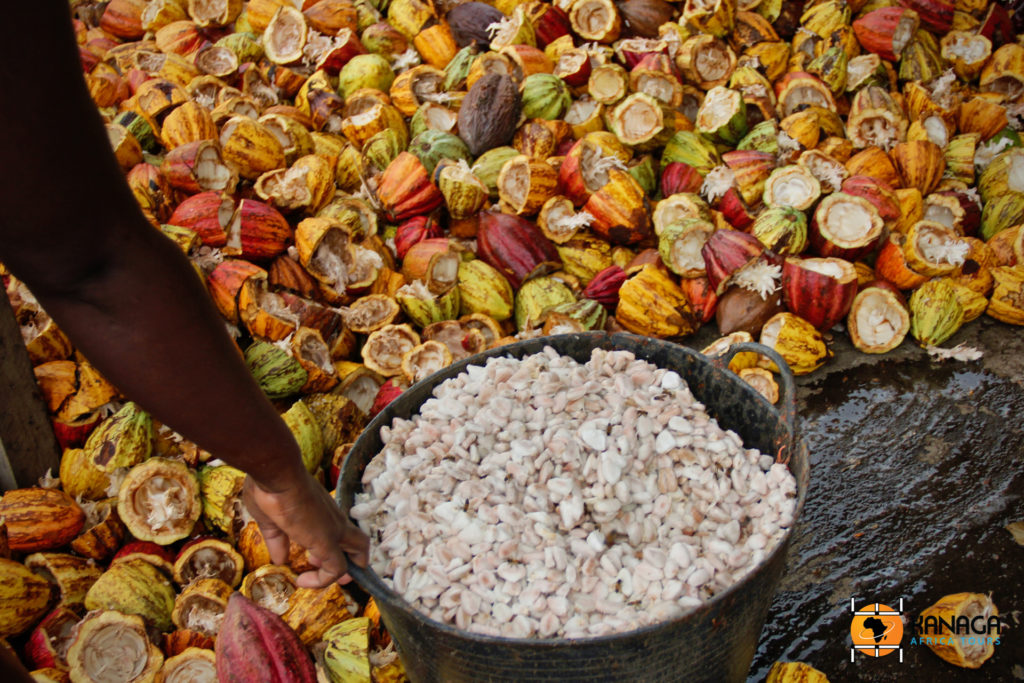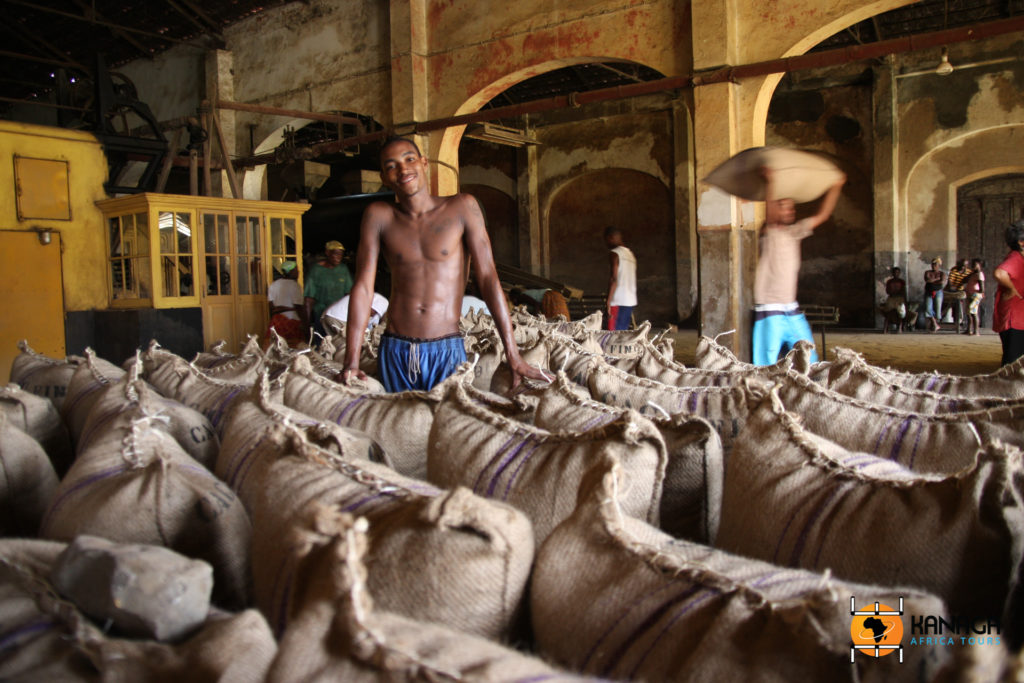Originally uninhabited, the history of Sao Tomé and Principe began in the 16th century and is inextricably linked to the slave trade and the creation of the vast Portuguese plantations, first of sugar cane, then of coffee and cocoa. Tracing the theory of the many roças on the island means going back to the history of the origins of the Sao Tome people themselves.
By grafting the first beans from Brazil in the 19th century onto the moist and generous volcanic soil, the Portuguese obtained an extremely superior quality of cocoa, still sought after by the international market and the basis of São Tomé’s economy. Initially, the archipelago was a military outpost for controlling and marshalling the slave trade, but with the creation of the roças (plantations), it became the world’s second port of call for slaves from the Congo and the Gulf of Guinea, who were deported to populate these uninhabited islands and work the land. They were joined by the leaders themselves and by Jewish Portuguese exiled from the motherland, or, after the abolition of slavery, by Angolan, Mozambican and Cape Verdean immigrants seeking employment on the plantations. Soon, a new Creole culture of metissage took over around the agricultural demesnes of the roças.
The roças were true self-governing villages, linked by paths that can still be travelled today and connected to the port of Sao Tomé by a railway line for the transport of crops. Self-sufficient, they housed the directors’ lodgings, administrative buildings, slave dormitories, storage warehouses, processing factories and even churches and hospitals. Many of these plantations were divided up after Independence, and only a few of their grand colonial architectures have been restored to tourist hotels or taken over by private individuals who have restored them to their former glory.
The roça Agua Izé is one of the most interesting, still active in the cultivation and processing of cocoa beans and coffee. Its decadent buildings, including the warehouses, the processing factory and the ruins of the old hospital, are particularly impressive.
Further south, still on the east coast, is the area of Sao Joao dos Angolares, dotted with ancient Portuguese roças. The name comes from a group of 200 Angolans who, in the 16th century, survived the shipwreck of the ship that was deporting them and managed to reach the island. They spent dozens of years in hiding, to avoid being reduced to forced labour in the camps. Living on fishing, they founded a small kingdom under King Amadoir, who in 1596 decided to attack the Portuguese government. Today, the descendants of the Angolares still live in the south of Sao Tome, speak their own Bantu language and form a distinct group from the direct descendants of the slaves, called the Forro Saotomensi.
A magnificent example a few kilometres from the capital is the roça Agostinho Neto (Rio do Ouro), the most imposing and ruthless in colonial times. Conceived as a veritable outpost of forced labour, the concession consisted of several areas, including the slave quarters, which were separated into two different quarters, one for Angolans and one for Cape Verdeans, in order to better control them. With the abolition of slavery, the plantation continued to function, putting the workers under a nominal contract that did not, however, guarantee them any rights. After independence, the workers became são-tomenses and continued to live freely on the roças, which today produces cocoa, pepper and vanilla.
Claudio Corallo, an Italian agronomist, is now a central figure in the agricultural sector of Sao Tomé. A coffee enthusiast, he took over a vast plantation on Mount Café (620 m) 30 years ago. The gateway to the wildest and greenest central part of the island, not far from the botanical gardens of Bom Sucesso, the peak of Pico Sao Tomé (2200 m), the Obo National Park and the verdant Bombaim rock, the Nova Moca plantation is set in an idyllic landscape. In Sao Tomé, Claudio Corallo also discovered cocoa, finding one of the oldest varieties, which arrived directly from Brazil in the 19th century. He breathed new life into this precious variety in the roça Terreiro Velho, and today he transforms it into superior, imaginatively flavoured chocolate using new experimental techniques. A didactic visit to his chocolate factory will reveal all, or almost all, of the processes involved in growing and processing cocoa.







